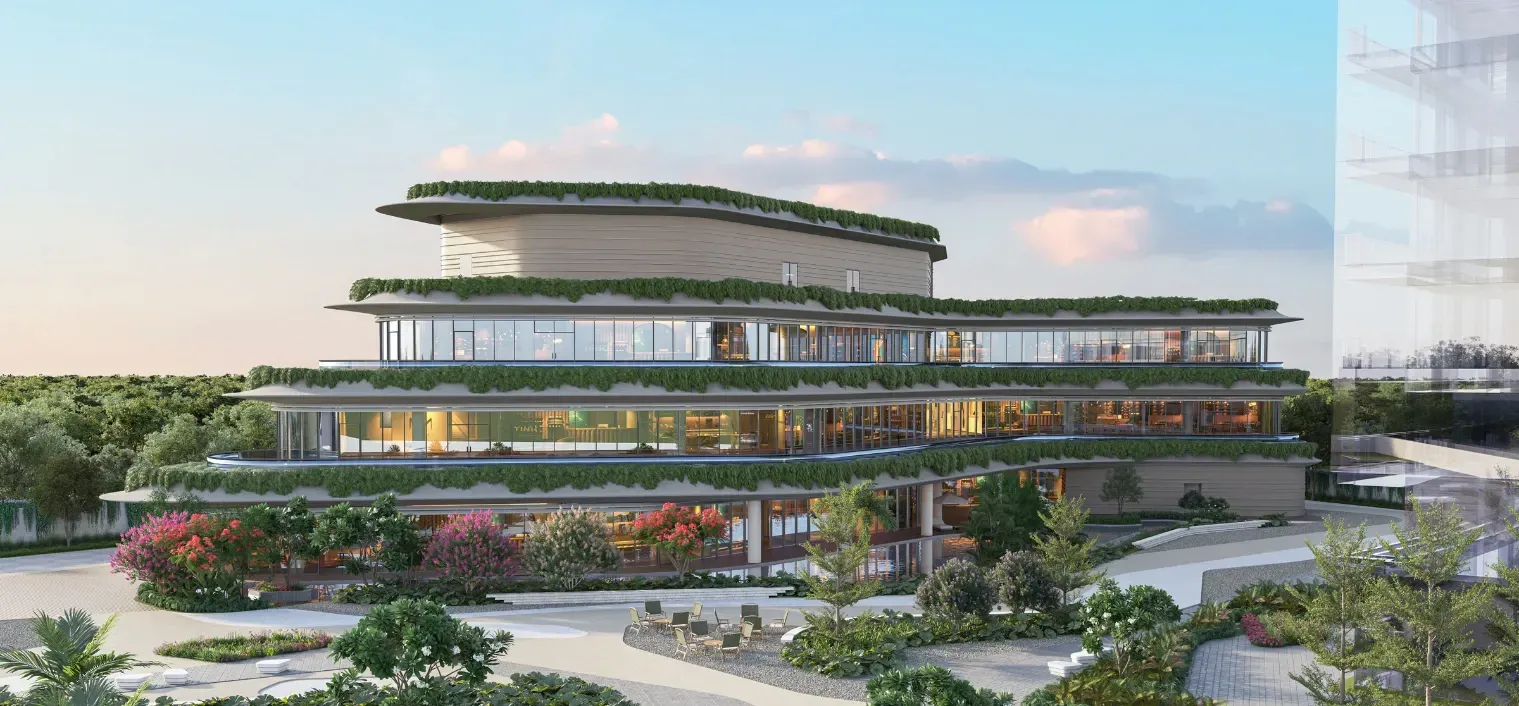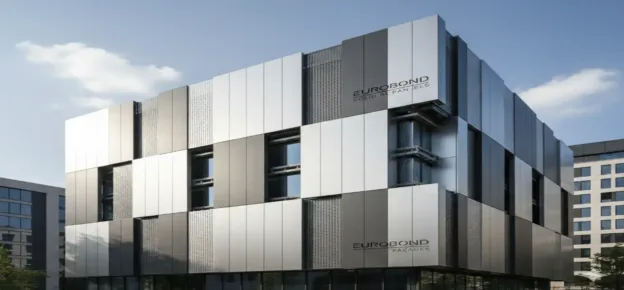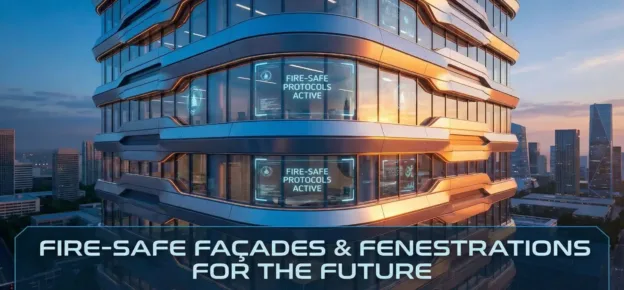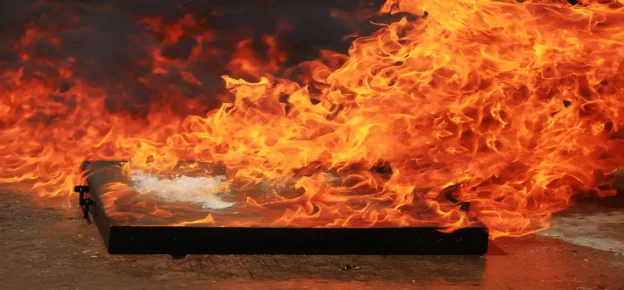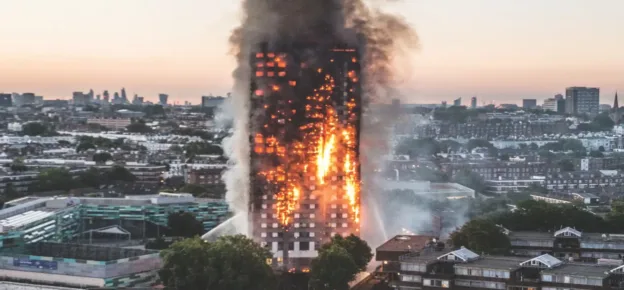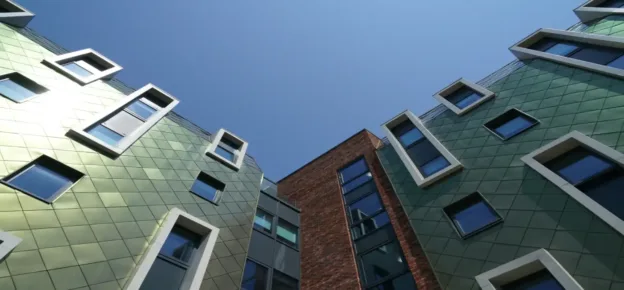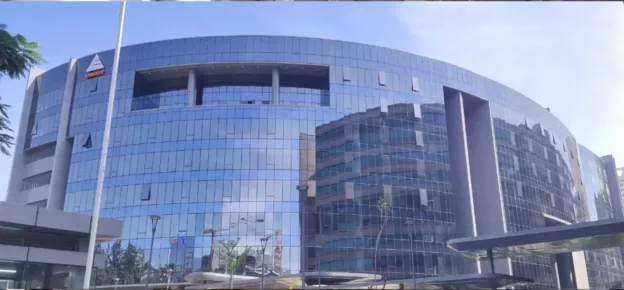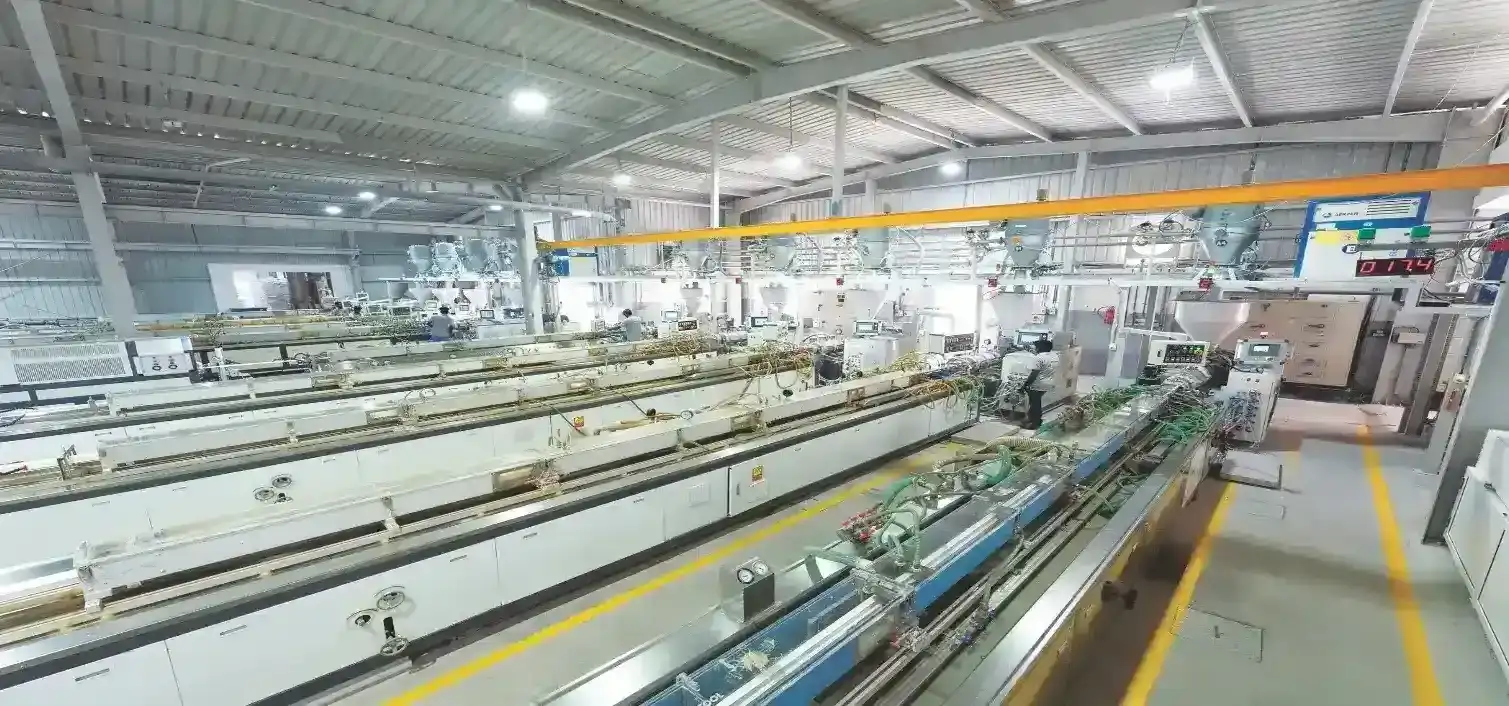As buildings grow taller and architectural forms more complex, fire safety has emerged as a defining concern in façade and fenestration design. The increasing use of composite materials, ventilated cladding systems, and expansive glazing has introduced new vulnerabilities – particularly in how fire can spread through cavities, joints, and poorly detailed interfaces. In this context, ensuring the fire performance of building envelopes is no longer just about selecting the right materials; it requires a layered, system-based approach rooted in collaboration, technical rigour, and code compliance.
Passive fire protection – through fire-stopping, compartmentalisation, cavity barriers, and fire-rated glazing – must now be integrated from the earliest design stage. When façade safety is treated as a technical add-on rather than an architectural priority, it leads to costly retrofits and potential hazards. Early engagement with façade engineers, fire consultants, and product manufacturers is therefore critical to prevent these issues and ensure seamless integration of safety measures.
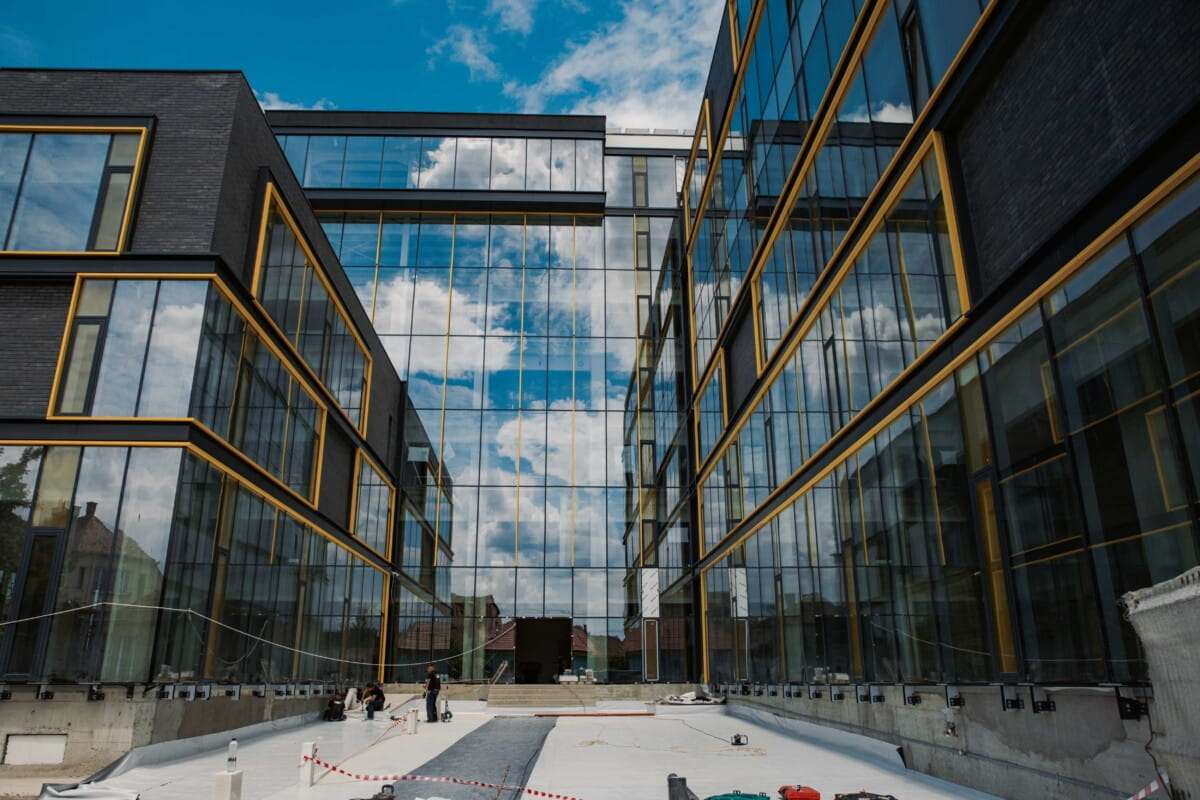
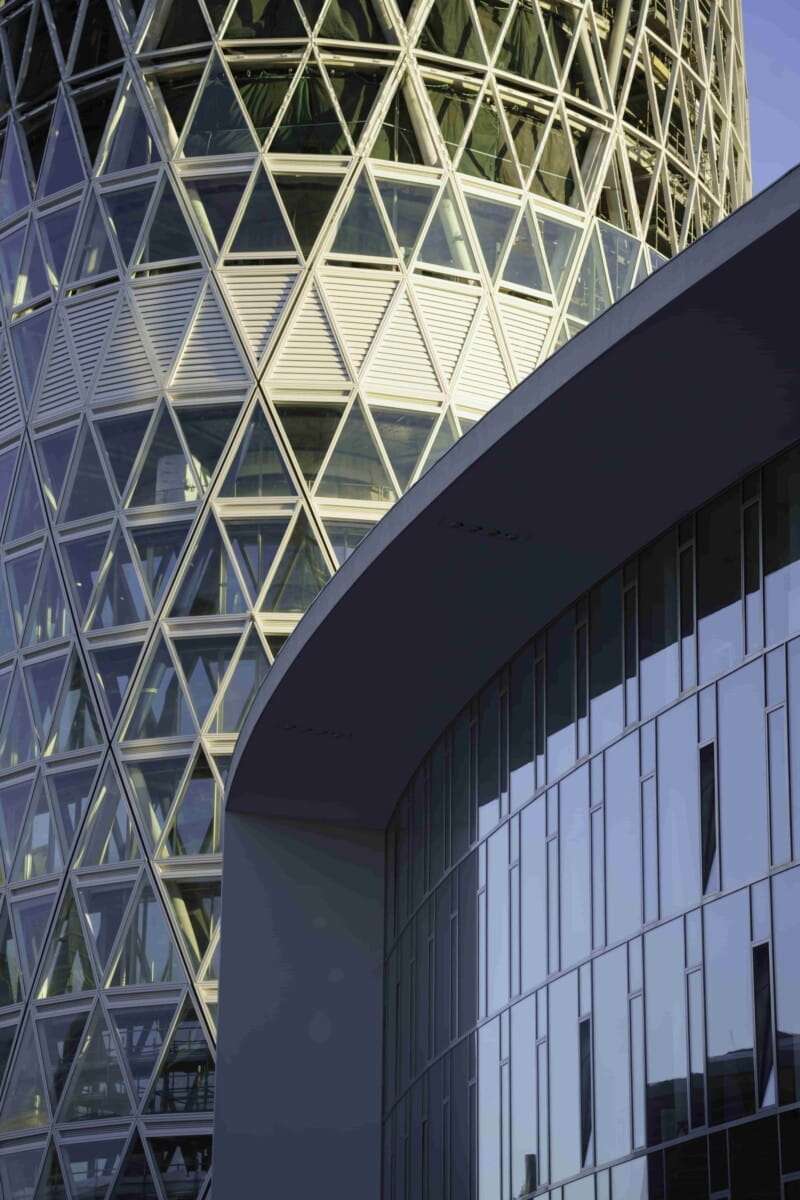
Compounding the challenge is the reality that fire-rated materials alone do not guarantee compliance. The entire façade assembly – including fixings, anchors, insulation, and sub-structures – must be tested and certified as a complete system. Mismatched or substituted components, often made on-site due to supply constraints or cost pressures, can compromise the integrity of even the most well-intentioned designs. Furthermore, balancing fire safety with other performance parameters such as water resistance, acoustic insulation, and energy efficiency requires thoughtful detailing, performance modelling, and material compatibility checks.
Adding to the complexity is the evolving regulatory landscape – both globally and within India. With new risks emerging from battery storage, electric vehicles, and changing building typologies, staying updated with fire norms and aligning them with global standards is becoming increasingly important. The goal is no longer just code compliance, but future-proofing façades against risks that continue to evolve.
In this cover story, we have interviewed leading subject-matter experts in architecture, façade engineering, and real estate development. Their insights-rooted in real-world projects and field challenges, highlight the strategies, systems, and design philosophies shaping a safer future for façades and fenestration.
Designing For Safety And Performance: Experts Share Their Approaches To Façade Design

Ar. Amit Singhal, Director, GPM Architects & Planners, observes, “Designing resilient façades goes beyond selecting compliant materials – it is about thinking systemically. Fire safety, especially in vertical developments, is achieved through a layered approach using fire barriers, non-combustible insulation, and cavity closures. These must be integrated from the beginning, not as post-design additions.” He further explains the importance of pressure-equalised systems and drained cavities for water resistance, while acoustic isolation is achieved through laminated glazing, air gaps, and insulated mullions. “We treat façades as high-performing membranes that subtly perform complex work and invisibly shape the lived experience of every user,” he adds.

Ar. Auna Sando, Founder – Elements Energy, agrees that these concerns are fundamental. “For fire safety, I always prioritise compartmentalisation. Integrating fire-rated glazing and installing cavity barriers at every floor level is non-negotiable to prevent vertical fire spread. Living in Chennai, where the monsoon can be unforgiving, has influenced my approach to water resistance-I lean toward pressure-equalised rainscreen systems with layered vapour barriers. Noise control, especially in urban settings, involves double or triple-glazed units with asymmetrical glass thicknesses and sound-absorbing materials within cavities,” she notes.

Ar. BK Malagi, COO – Experion Developers, states, “Our approach is founded on rigorous analysis and leverages design parameters determined through wind tunnel studies and informed engineering inputs. We ensure absolute compliance with local fire codes, particularly NBC 2016 standards. Water resistance is achieved through pressure-equalised rainscreen systems, while acoustic performance involves layered glazing systems and precision detailing tailored to specific project environments.”

Echoing the importance of integrated design, Ar. Shivani Satpathy Oberoi, Founder – Idea Lab Design Studio, explains, “For fire safety, we select non-combustible or limited-combustibility materials and follow appropriate norms for fire doors and façade detailing. Water resistance hinges on appropriate material selection and sealing post-installation. Noise control benefits from air insulation and cavity barriers, which also act as fire barriers.” She also emphasises planning norms like egress routes and refuge areas for high-rise buildings.

Ar. Shreyanshi Dubey, Founder – Varenyam Architecture & Design, highlights the importance of embedding safety and performance from the conceptual stage. “We focus on non-combustible materials, fire-rated glazing, and zoning to prevent fire spread. For water resistance, pressure-equalised rain screens, quality sealants, and effective drainage detailing are key. Noise is controlled through layered glazing, insulated profiles, and mock-up testing for all critical interfaces,” she notes.

Ar. Arijit Ghosh, Principal Architect, Studio 4th Dimension, adds a detailed technical perspective. He points out that all buildings must adhere to statutory fire approvals and highlights crucial elements such as travel distances between staircases, smoke barriers, refuge areas, fire tender movement, sprinklers, and wet/dry riser systems. “Water resistance in façades is approached in two ways-against ground, groundwater and rain penetration-using waterproofing methods like sealants, drainage slopes, water bars, and membrane coatings. Acoustic control involves managing sound transmission and absorption through STC-rated partitions and NRC-rated interior materials,” he explains.
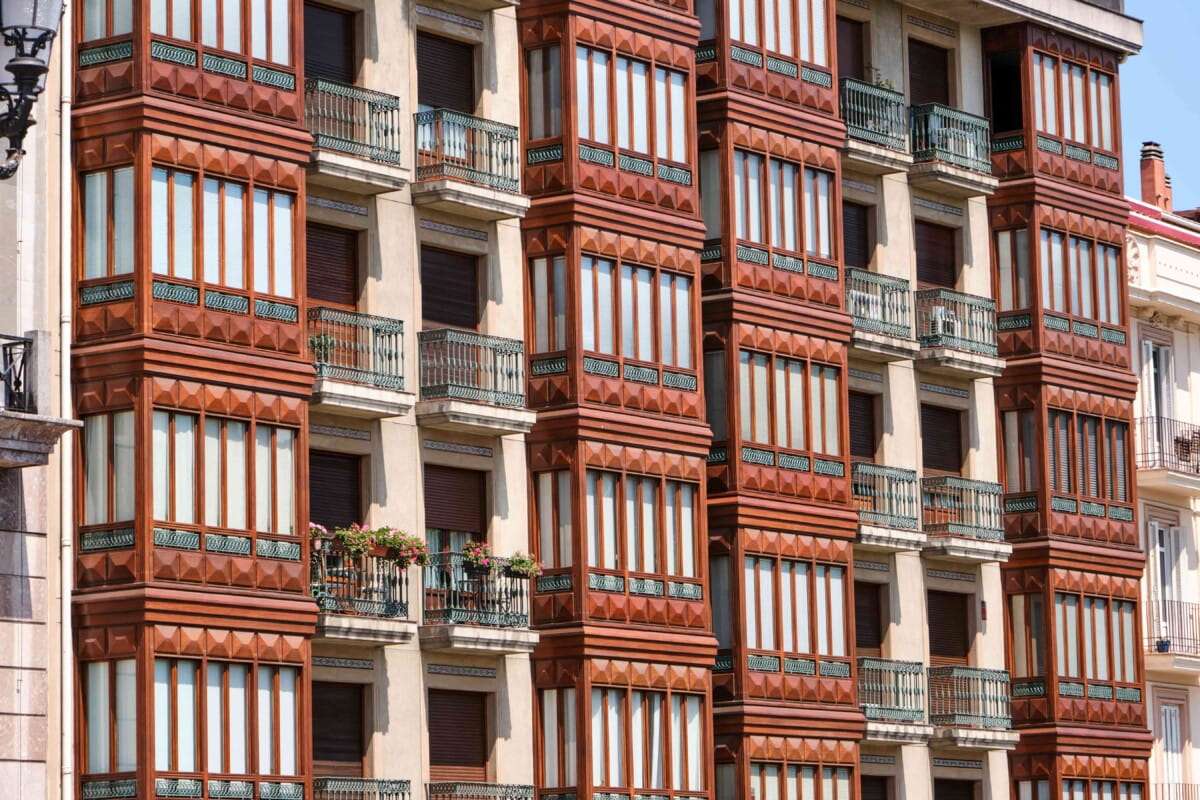
Balancing Aesthetics, Energy Efficiency, And Fire Resistance In Façade Design
Ar. Singhal opines that the idea of a trade-off between aesthetics, safety, and sustainability is a misconception. “In practice, it’s about synergy. Aesthetic expression must grow from functional clarity,” he explains. By integrating fire-rated aluminium panels and high-performance glass early in the design process, his team ensures that compliance and elegance coexist. “When façade strategy evolves in tandem with architecture, the outcome is effortless. A façade can be minimal, beautiful, and high-performing, all at once.”
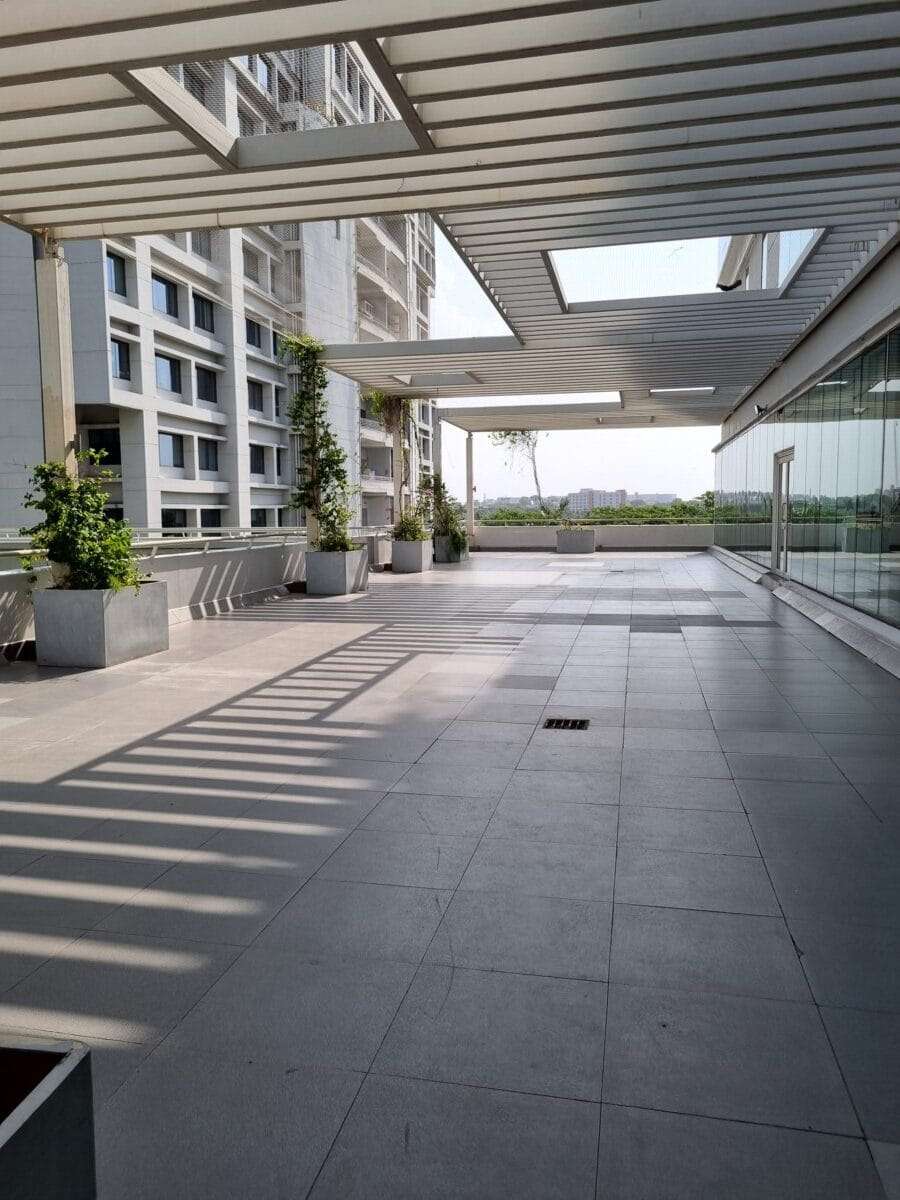
Ar. Sando notes that, “Designing performance-driven façades is about letting function shape beauty.” She favours fire-rated glazing with ceramic frits that provide both compliance and texture, alongside dynamic shading systems that respond to sunlight. She adds, “With newer glazing technologies, I have found it’s now possible to maintain both transparency and high performance… the building does not just perform better – it feels more honest, more resolved.”

Bharat Bahl, Joint Managing Director – Krishna Build Estates Pvt Ltd (KBE), says his firm starts by locking in fire-class benchmarks and energy goals upfront. “Because the palette is non-combustible from day one, the final expression can be as glassy or as solid as the architect wishes without risking late-stage fire-engineering surprises,” he explains. Rigorous selection and testing processes ensure that safety does not inhibit creativity.
Ar. Malagi agrees that performance and aesthetics must go hand in hand. “From the conceptual stage forward, we maintain close coordination with architects, energy consultants, and fire engineers,” he notes. This integrated methodology allows his team to create façades that are “both visually compelling and technically robust.”
For Ar. Oberoi, form indeed follows function. “We try to address the practical aspects driving the exterior envelope first and then develop the aesthetic appeal,” she observes. By factoring in material choices, sun-path analyses, and project budgets, her team ensures that energy efficiency and safety are built into the façade’s concept from the outset.
Ar. Dubey believes that “beauty and performance go hand in hand.” Her process involves analysing site orientation, climate, and occupant usage. “Safety is of supreme importance-hence we select only non-combustible finishes and use tested insulation.” She insists that the best façade is one that “tells a story-while inherently protecting, insulating, and lasting.”
Ar. Ghosh highlights the importance of balancing U-values and fire ratings before bringing creativity into the aesthetic expression. “When both fire resistance and energy efficiency fall into place, aesthetics blends in with some creativity from architects and façade designers,” he asserts.
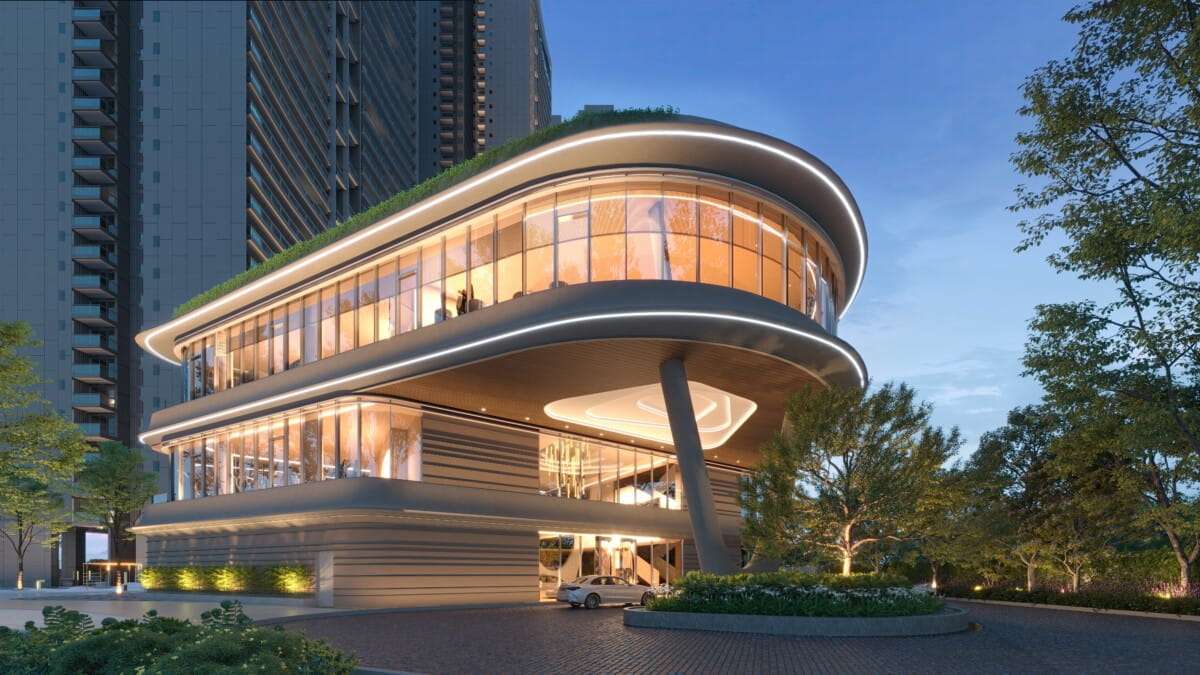
Sourcing Compliant And Fire-Rated Façade Systems Amid Evolving Global Standards
Ar. Singhal observes that “the biggest challenge is not sourcing materials-it’s sourcing accountability.” While many façade materials are advertised as fire-rated, the accompanying hardware systems often lack certification, creating a misleading sense of compliance. He further adds, “A single EI rating means little unless the entire assembly-from anchors to insulation-is co-certified.” The shortage of trained contractors and the limited availability of quality local alternatives exacerbate the issue. “We prioritise early vendor engagement, third-party testing, and full system mock-ups,” he notes, reinforcing that lifecycle clarity and system integrity matter more than procurement alone.
Ar. Sando shares that while India’s manufacturing ecosystem is progressing, many internationally certified components still require importation, which drives up both cost and carbon emissions. “Aligning BIS norms with global green building certifications can be complex,” she says, pointing out that supply chain disruptions often lead to design compromises or necessitate early approvals for multiple alternatives. “Quality control is another concern-especially with newer or local vendors,” she adds, highlighting the need for rigorous third-party testing and long-term partnerships with innovative Indian suppliers.
Ar. Bahl opines that “the main hurdle is securing whole-assembly evidence-panel, sub-frame, insulation and seals-rather than ‘FR’ labels on individual parts.” He notes that comprehensive documentation, such as unexpired BS 8414 or NFPA 285 reports, must be demanded from vendors upfront to avoid costly mid-project surprises. He does, however, acknowledge a recent improvement: “Supply-chain risk eased in May 2025 when Viva opened India’s first A2-core ACP facility, trimming import lead times and currency exposure.”
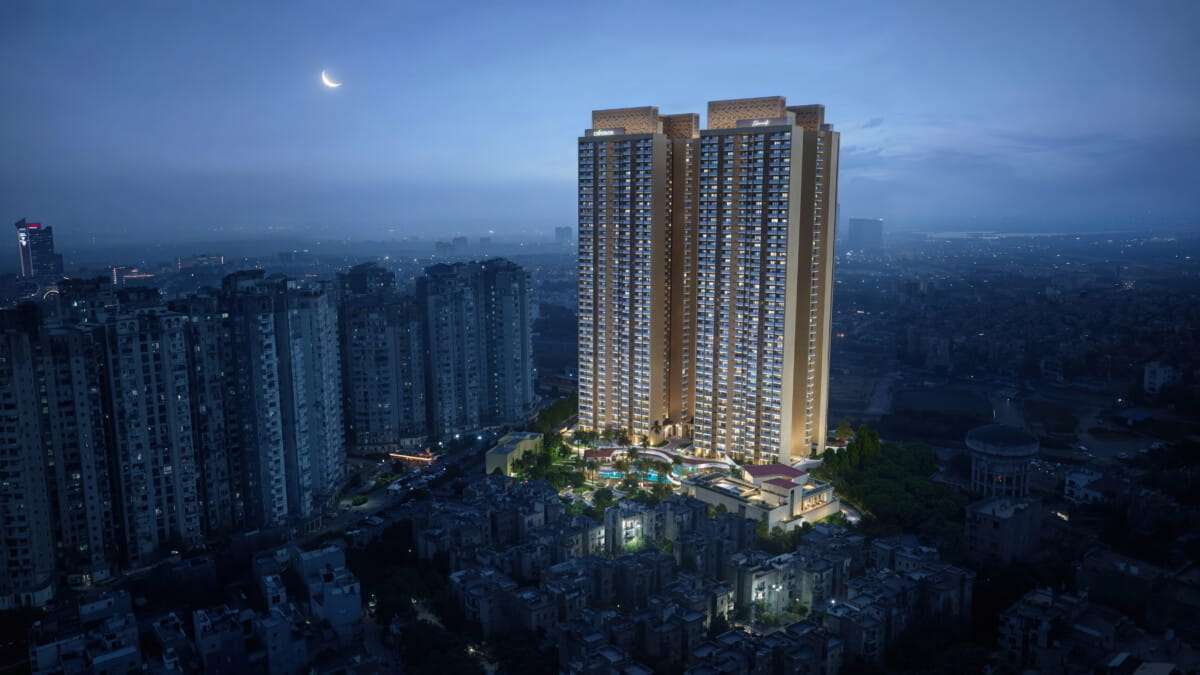
Ar. Malagi notes that “the limited availability of fully tested and internationally certified façade systems that simultaneously satisfy aesthetic and performance requirements” is a pressing concern. He adds, “Extended lead times for compliant systems create significant scheduling pressures,” making early supplier engagement and adaptive detailing strategies crucial to maintaining compliance.
Ar. Dubey agrees that availability remains one of the biggest hurdles, especially in tier II and III cities. “Certified materials are not as mature in such regions, and global products come with issues like longer timelines, higher costs, and climatic incompatibility,” she notes. Ar. Dubey also points to the gap between lab-tested performance and field-level execution, cautioning that “site-level substitutions, even with detailed specifications, can compromise safety.” Her strategy involves proactive supplier vetting, early procurement planning, and rigorous third-party audits.
Ar. Oberoi remarks that “global standards and country-specific codes vary and are ever-evolving as the risks are evolving.” She cites the example of new fire risks associated with the adoption of electric vehicles and battery storage, noting that the pace of technological change demands constant market study and material awareness. “Spreading awareness with stakeholders aids in better decision-making,” she adds.

Designing Against Fire: Mitigating Spread Through Façade Cavities And Joints
Ar. Singhal observes, “Mitigating the risk of fire spread through cavities and joints starts with early detailing and the use of passive protection systems. We embed fire-stop sealants, smoke seals, and cavity barriers that are tested for a minimum of 120-minute FRL, particularly across slab edges and vertical joints.” He notes the importance of evaluating every junction, from façade to floor gap to service penetrations at the assembly level. “In high-rise curtain wall systems, horizontal fire-stopping between floors is critical to prevent vertical flame migration,” he adds. Technologies like 3D coordination and BIM further ensure alignment and early conflict detection.
Ar. Sando shares insights from her retrofit work at IIT Madras Research Park, explaining, “We installed horizontal cavity barriers at each floor level using intumescent materials that expand under heat, effectively sealing fire paths. These were backed with mineral wool and fire-rated sealants, which also contributed to better thermal insulation.” She emphasises that even complex junctions and structural glazing details were meticulously upgraded to maintain both fire resistance and aesthetic integrity.
Ar. Bahl opines, “The mantra is ‘continuous, inspectable barriers.’ Horizontal cavity barriers run at every slab edge; vertical barriers follow the spacings signposted in Draft NBC 2025 Part 4.” He adds that all façade-to-structure interfaces are modelled with the fire engineer before shop drawings are issued, and verified on-site with borescope photos. Slim intumescent closers are used to swell under heat and seal ventilation gaps, and joint sizes in ventilated façades are carefully controlled to prevent chimney effects.\
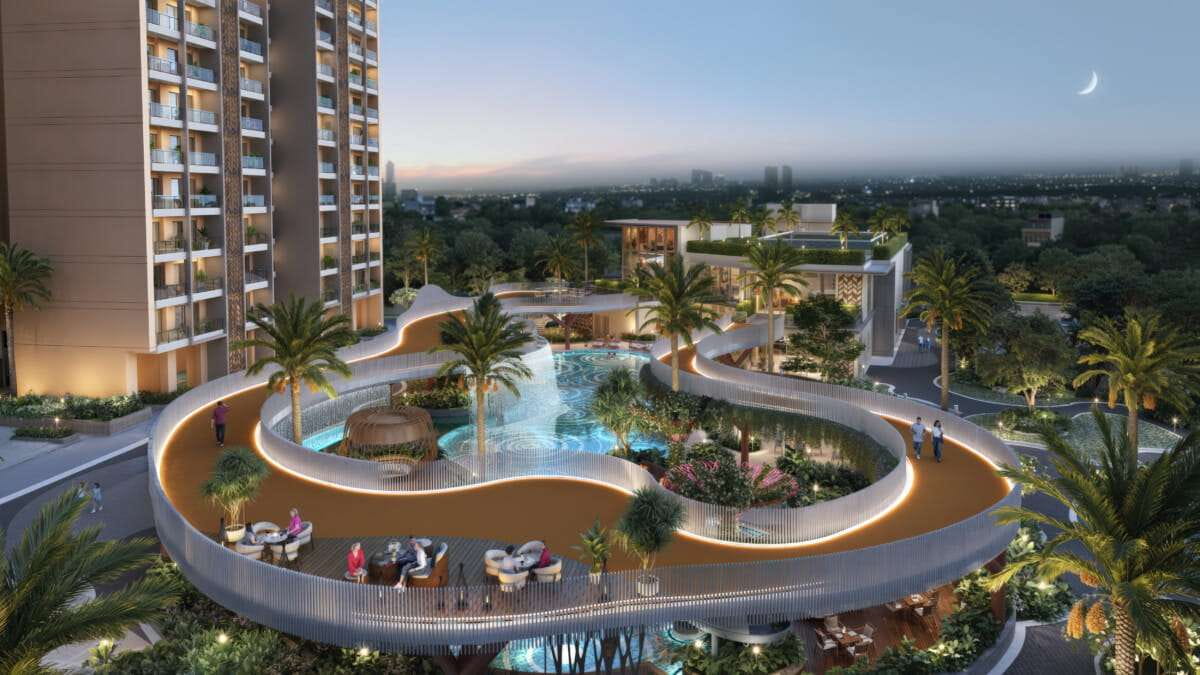
Ar. Malagi notes, “Fire spread mitigation is achieved through a strategic deployment of fire-stopping products and cavity barriers, combined with precise detailing that restricts both horizontal and vertical fire propagation.” He also underlines the role of collaboration with fire safety vendors and advanced simulation modelling to validate real-world performance.
Ar. Oberoi reflects on industry learnings, referencing a LinkedIn article by Alessandro Massarotto. She elaborates, “Sealing the gaps and cavities with fire-resistant lining between the false ceiling and glass, and having fire stops between floors is ideal.” She also draws attention to common risk areas, such as voids between curtain walls and slabs, that demand detailed treatment.
Ar. Dubey adds, “Curtain wall systems can be beautiful, but they come with hidden fire risks-especially through their cavities and joints. That is why we work with fire consultants from day one. We include horizontal and vertical fire barriers at each floor and carefully detail slab edges to prevent any ‘chimney effect’.” She stresses the importance of selecting fire-rated materials and ensuring proper installation sequencing to avoid compromises.
Ar. Ghosh underlines the critical role of smoke seals. “Mitigating the risk of fire spreading through cavities, joints, and other openings is taken care of by installing smoke seals-especially at interfaces like door frames, sub-frames, spandrels, vision panels, mullions, and false ceiling joints,” he explains. These components, often made of strips, gaskets, or intumescent materials, are essential in blocking airborne smoke and toxic gases.

The Importance Of Early-Stage Collaboration In Fire-Safe Façade Design
Ar. Singhal observes that façade and fire safety performance are most effectively addressed when collaboration starts at the drawing board. “The earlier we bring in façade consultants and fire experts, the more coherent and conflict-free the final solution tends to be,” he notes. He advocates for the use of BIM and clash detection tools to visualise and resolve technical challenges early on. According to him, design charrettes, coordination meetings, and mock-up reviews are critical in ensuring decisions are made in real time, avoiding a reactive approach to fire safety.
Ar. Sando agrees wholeheartedly, stating, “Early-stage collaboration is not just helpful, it is absolutely critical, especially in complex retrofits where you are navigating constraints from both the past and the future.” She shares how early coordination meetings shaped smarter decisions on material selection and cavity design, enabling synergies between fire resistance and energy performance. She highlights the importance of shared BIM models and weekly stakeholder meetings to maintain alignment and accountability, particularly in projects targeting net-zero goals.
Ar. Bahl notes, “Early alignment is cheaper than late fixes.” At KBE, a façade–fire workshop is scheduled as soon as the building massing freezes. Bahl stresses the need for a shared IFC-based BIM model that flags missing cavity barriers and other critical elements before complexity sets in. A common checklist is used to log decisions, ensuring fire-critical components are not lost during later revisions.
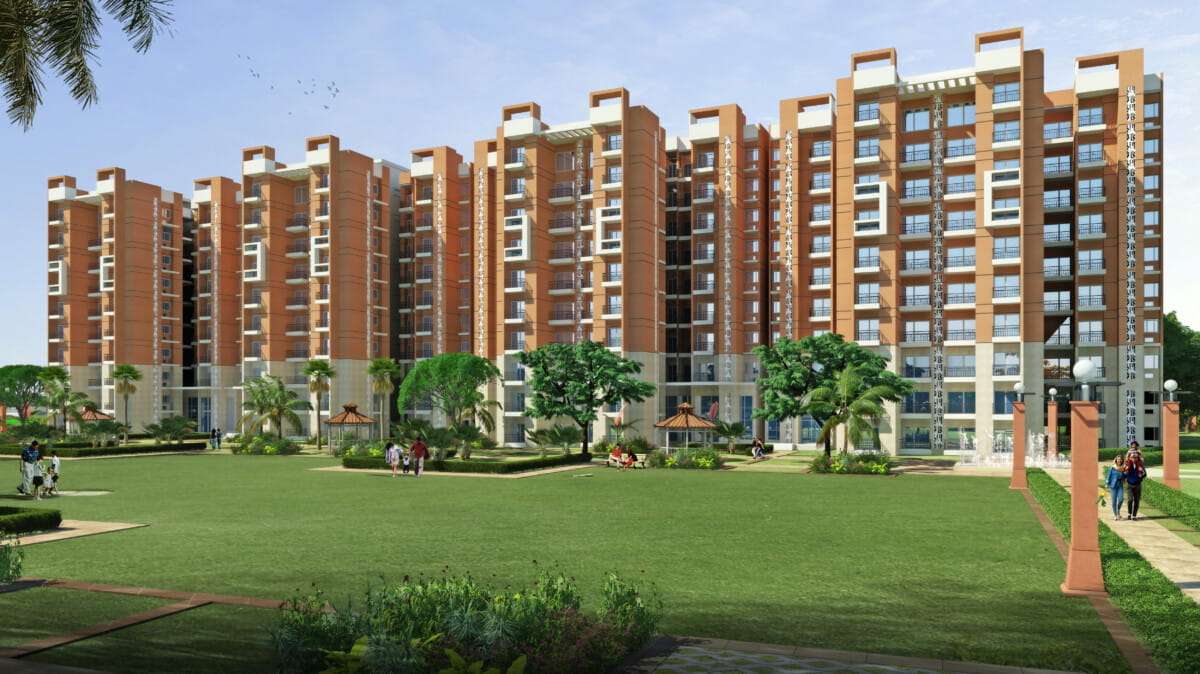
Ar. Malagi echoes this sentiment, stating that early-stage collaboration forms the foundation of successful and compliant façade design. “Our coordination enhancement strategies include joint design workshops, early-stage mock-ups, and structured review meetings,” he explains. These measures enable stakeholder alignment and early conflict resolution while upholding both visual and performance goals.
Ar. Oberoi emphasises the holistic benefit of early collaboration. “It ensures teams positively set goals, consider all risks, and derive solutions together, avoiding delays or cost inflation during project delivery,” she notes. Oberoi recommends implementing a Roles and Responsibilities Matrix, regular interdisciplinary meetings, and the use of collaborative software platforms to streamline project coordination.
Ar. Dubey asserts, “Early collaboration is the most essential part of design. A façade design that works visually but fails on safety or thermal performance cannot be put into design.” She advocates for kickoff workshops, mutual checklists, and shared BIM models to ensure all disciplines are in sync from concept to completion. According to her, some of their most seamless and efficient projects have been the result of this proactive, collaborative model.
Ar. Ghosh emphasises the architect’s responsibility in leading this collaborative charge. “It is the architect who leads the project and should have thorough knowledge of fire safety norms,” he says. According to Ghosh, architects must define specific façade system requirements during the design development stage, with façade consultants and fire experts responding to these specifications.

Conclusion
As the built environment continues to evolve in scale and complexity, the imperative for fire-safe façade design has never been greater. The façade is no longer a decorative shell – it is a vital line of defence against fire hazards, demanding rigorous attention from concept to construction. Ensuring compliance with fire safety norms is not just a regulatory necessity but a moral responsibility, especially in high-rise and high-occupancy buildings.
Effective fire safety in façades is achieved through an integrated approach that combines non-combustible materials, fire-rated glazing, cavity barriers, and well-detailed interfaces. It requires a thorough understanding of how fire spreads – horizontally and vertically – and how vulnerable gaps, joints, and penetrations can become conduits if not properly addressed. Systems must be designed as a whole, tested as a complete assembly, and verified through recognised standards to ensure their real-world performance under fire conditions.
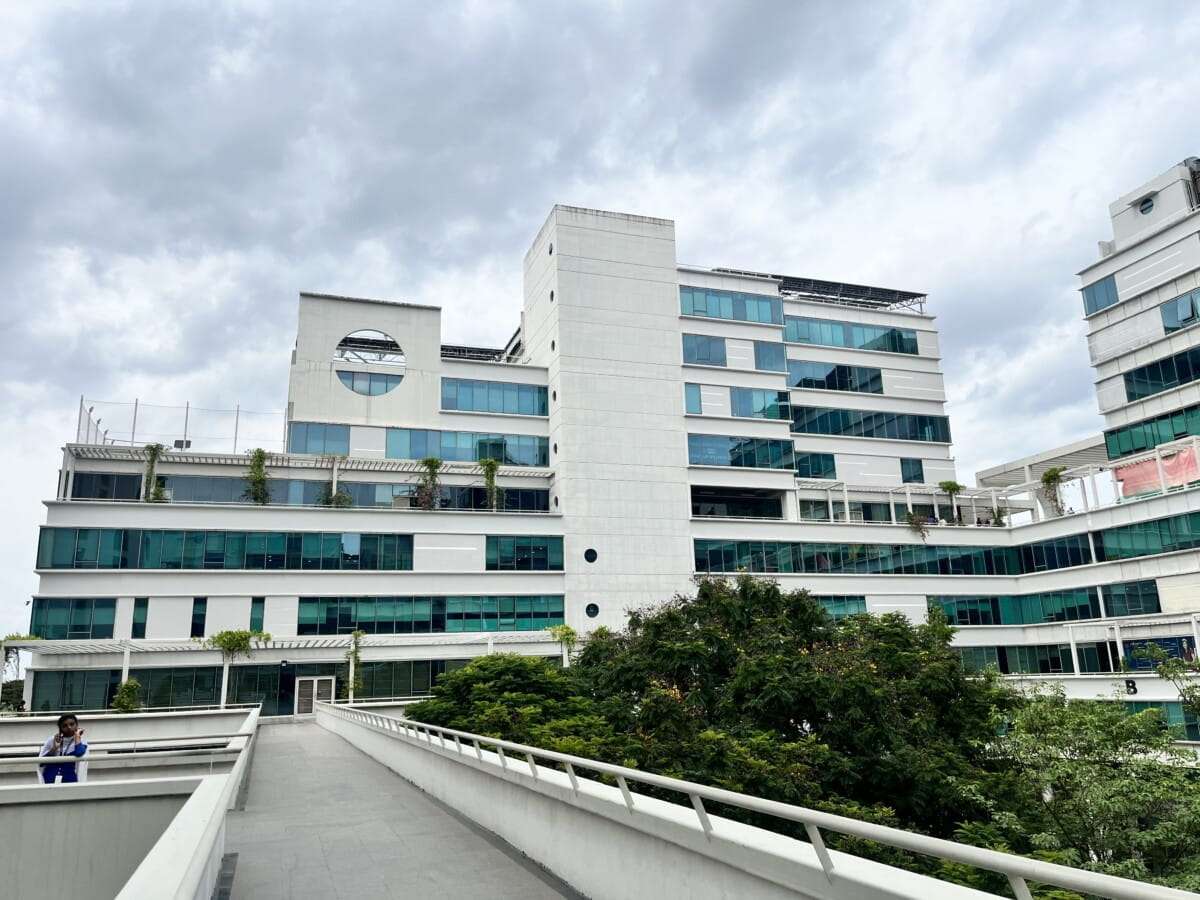
Moreover, the availability and certification of materials, along with proper installation practices, play a critical role in upholding safety on site. Sourcing fire-rated components is not enough; compatibility, certification validity, and installation quality are equally essential. This highlights the importance of early-stage planning, coordination across disciplines, and continuous quality assurance throughout the lifecycle of a project.
Looking ahead, fire-safe façade design will depend not only on technological innovation and regulatory advancement but also on a culture of accountability and collaboration. From architects and engineers to contractors and manufacturers, every stakeholder must be aligned in their commitment to safeguarding lives and assets. Only then can façades truly serve their purpose – not just as architectural expressions, but as resilient, protective envelopes that meet the highest standards of safety and performance.
